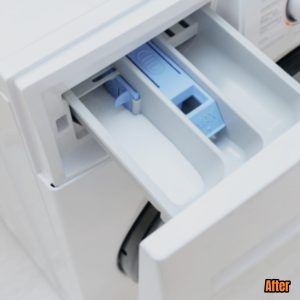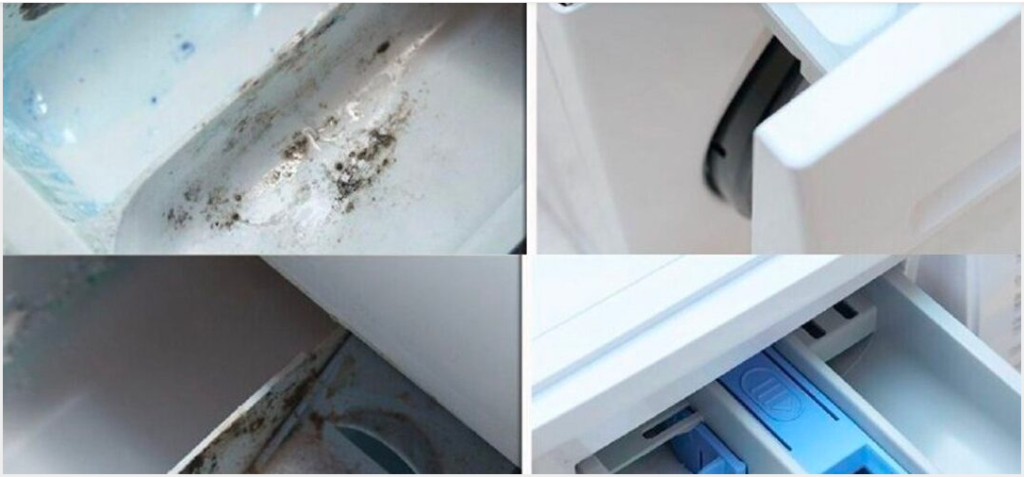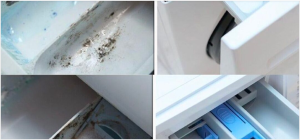
Mold in the Washing Machine Drawer: Why It Forms and How
To Get Rid of It
Mold in your washing machine drawer is a common issue that many homeowners face, and while it might seem like a minor nuisance, it can be a significant problem if left unchecked. Mold and mildew thrive in warm, moist environments, and your washing machine drawer provides the perfect conditions for their growth. Not only is mold unpleasant to deal with, but it can also lead to musty smells and even cause potential health risks. Luckily, there are ways to prevent mold from forming and eliminate it once it does. Here’s everything you need to know about why mold appears in the washing machine drawer and how to get rid of it.
Why Does Mold Form in the Washing Machine Drawer?
Understanding the reasons behind mold growth in your washing machine drawer is the first step in preventing it. Mold requires three key elements to thrive: moisture, warmth, and organic material. Your washing machine drawer is a breeding ground for mold due to the following reasons:
- Excess Moisture: After every wash cycle, residual moisture remains in the detergent drawer. Since the washing machine is a damp environment, this moisture creates a perfect setting for mold and mildew to grow.
- Detergent Residue: Many detergents and fabric softeners leave behind residue, which can build up over time. This sticky, organic material provides food for mold spores, contributing to its growth.
- Poor Air Circulation: Washing machines often have limited ventilation, particularly in the detergent drawer area. Without proper airflow, the moisture and residue linger, allowing mold to flourish.
- Leave the Drawer Open After Use: Always leave the washing machine drawer slightly open after use to allow it to dry out. This will prevent moisture buildup and reduce the chance of mold growth.
- Clean Regularly: Clean the detergent drawer and the washing machine drum regularly to prevent detergent residue and moisture buildup. Wipe down the drawer and any other moist areas after every few loads.
- Use Less Detergent: Using too much detergent can leave behind excess residue, which mold can feed on. Make sure you’re using the correct amount of detergent for each load to avoid residue accumulation.
- Use a Mold-Killing Cleaner: If you live in a particularly humid environment, you might consider using a washing machine cleaner that is specifically formulated to kill mold and mildew. These cleaners can be used every month or so to keep your washing machine fresh.
- Run a Cleaning Cycle: Many modern washing machines have a “clean cycle” or “self-clean” option. If yours does, run it regularly with white vinegar or a specialized cleaner to prevent mold buildup inside the machine.
- Dirty or Wet Drawers: If you regularly close the washing machine drawer right after use without wiping it down, moisture accumulates and mold can develop more quickly
How to Get Rid of Mold in the Washing Machine Drawer
Now that we know why mold forms in the washing machine drawer, let’s look at some effective ways to clean it and prevent further growth. Here are step-by-step instructions for removing mold and keeping your washing machine drawer mold-free.
Step 1: Empty the Drawer
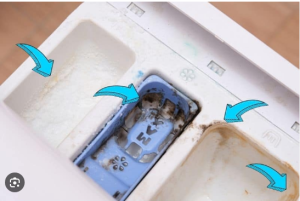
Before you start cleaning, take the detergent drawer out of the washing machine. This will allow you to access all the moldy areas and clean them properly. Most washing machine drawers can be easily removed, but check your user manual for specific instructions.
Step 2: Clean with White Vinegar and Baking Soda
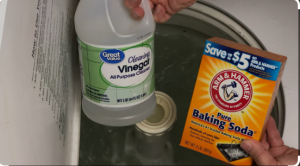
One of the most effective and natural ways to eliminate mold is to use a combination of white vinegar and baking soda. Vinegar has strong antimicrobial properties, and baking soda works as a gentle abrasive to scrub away mold and residue.
Instructions:
- Mix equal parts of white vinegar and water in a bowl or container.
- Add 1-2 tablespoons of baking soda to the solution.
- Soak a cloth or sponge in the solution and scrub all the moldy areas inside the drawer. Pay extra attention to the corners, as mold tends to accumulate there.
- Use a toothbrush or a small brush to scrub any hard-to-reach spots.
- For tough mold, let the mixture sit for about 10-15 minutes before scrubbing.
Step 3: Rinse and Dry
 Once you’ve scrubbed away the mold, rinse the detergent drawer thoroughly with clean water to remove any cleaning solution and residue. Be sure to dry the drawer completely before putting it back into the washing machine. You can use a clean, dry cloth or paper towel to wipe the drawer and leave it open for a while to air dry completely.
Once you’ve scrubbed away the mold, rinse the detergent drawer thoroughly with clean water to remove any cleaning solution and residue. Be sure to dry the drawer completely before putting it back into the washing machine. You can use a clean, dry cloth or paper towel to wipe the drawer and leave it open for a while to air dry completely. Step 4: Clean the Inside of the Washing Machine
Step 4: Clean the Inside of the Washing MachineWhile you’re cleaning the detergent drawer, don’t forget to clean the inside of the washing machine, especially the area around the drawer where mold can also form. Run an empty cycle with hot water and add a cup of white vinegar or a commercial washing machine cleaner to help kill any remaining mold spores.
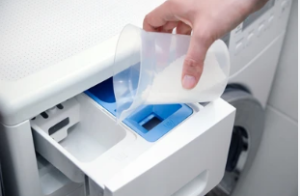 Step 5: Maintain a Mold-Free Washing Machine Drawer
Step 5: Maintain a Mold-Free Washing Machine DrawerTo prevent mold from returning, you should adopt a few habits that will help keep your washing machine clean and dry.
Final Thoughts
Mold in your washing machine drawer may seem like a minor inconvenience, but it can lead to bigger problems such as unpleasant odors and potential health risks. Fortunately, with a little bit of effort and regular cleaning, you can keep your washing machine mold-free and running smoothly.
By understanding why mold forms and how to clean it effectively, you can prevent the issue from recurring. Incorporating simple maintenance habits, such as leaving the drawer open and using less detergent, will go a long way in keeping your washing machine in top condition.
If you found this article helpful, don’t forget to like, share, and comment below! Help others maintain a clean and fresh washing machine by spreading the word about how to keep mold at bay.

